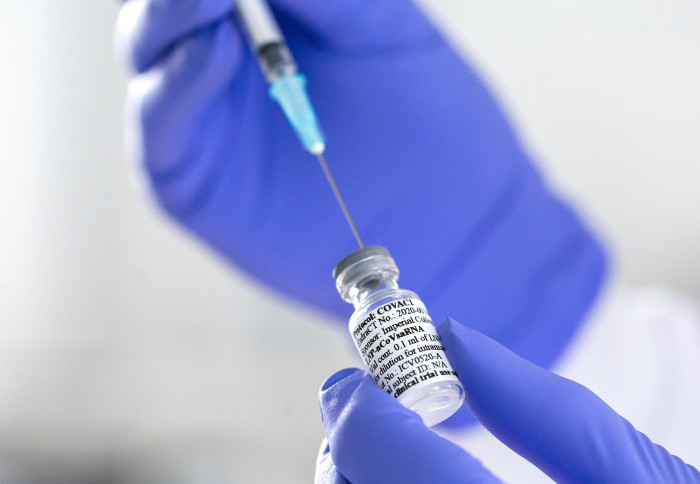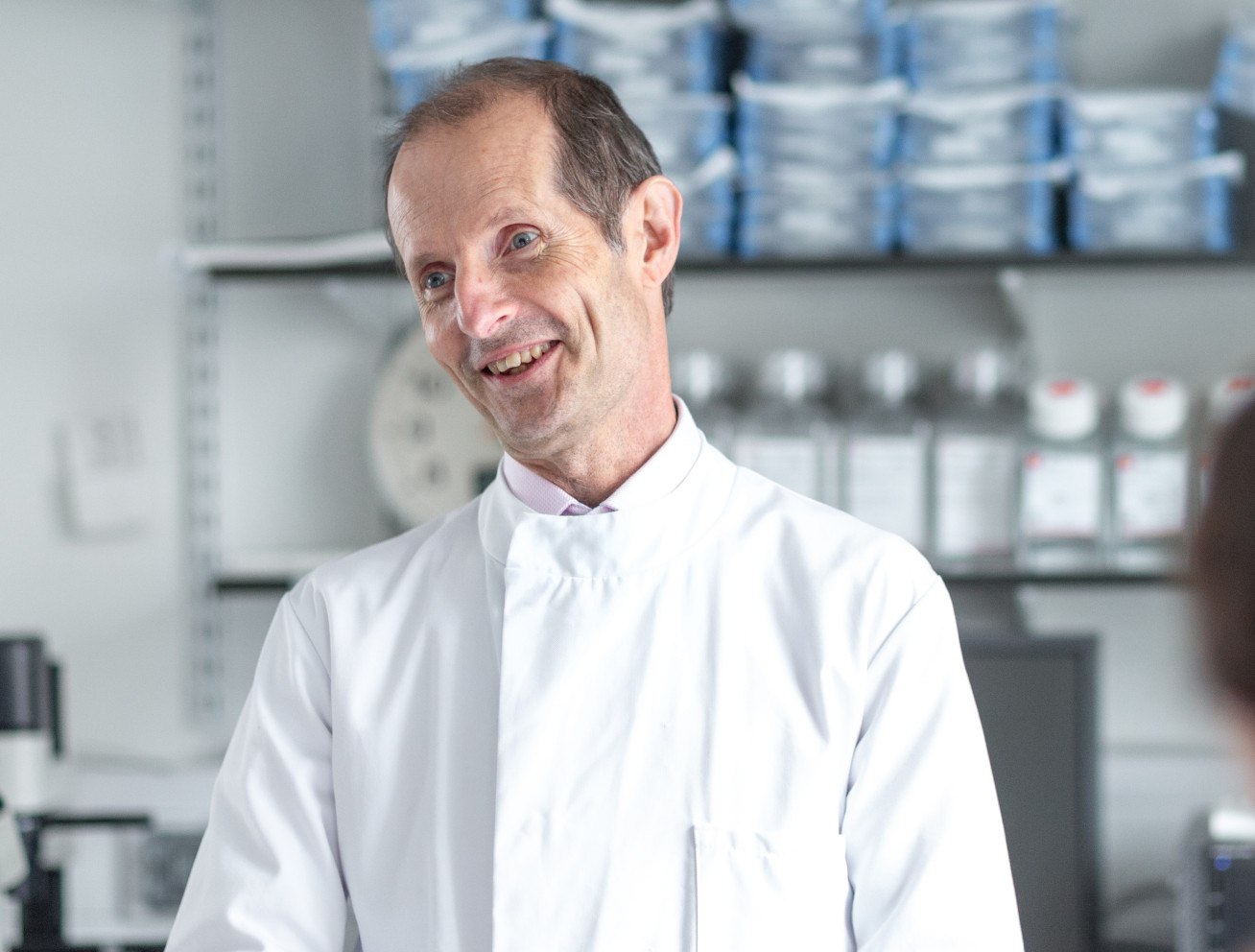

Results from the first trial of a new COVID-19 vaccine technology show no short-term safety concerns.
[This article was updated 17th January 2022]
The data, from scientists at Imperial College London, suggests the technology can generate immune responses against COVID-19 in up to 87 per cent of people, even at extremely low dose levels – the lowest of any COVID-19 vaccine candidate worldwide.
The approach is emerging as one of the great scientific advances of the pandemic Professor Robin Shattock Head of Imperial's COVID-19 vaccine project
The technology uses genetic code called self-amplifying RNA (saRNA). This genetic information holds instructions to make a protein found on the outside of the coronavirus, called the spike protein.
Once injected into the muscle of the arm, the cells make this spike protein, enabling the immune system to generate defences against the virus.
The team, who published their findings in the journal EClinicalMedicine, are now refining the technology to produce future vaccines and boosters against COVID-19, and emerging variants.
The team are modifying the technology to produce a more consistent and strong response, even at very low dose levels, and will pursue trials with updated vaccine candidates.
COVID-19 boosters
Professor Robin Shattock, who leads Imperial’s COVID-19 vaccine project, said: “Global demand for COVID-19 vaccines will remain high in the coming decade, given the emergence of lethal SARS-CoV-2 escape-variants, and expected requirement for booster vaccination. We have shown the saRNA technology is safe and can generate an immune response. We are now refining the Imperial saRNA platform to develop vaccines for a variety of other infectious diseases."
We are grateful to the volunteers in the trial for their time and input, as well as philanthropists and the government for their support and investment Dr Katrina Pollock Clinical Lead of the Imperial COVID-19 vaccine project
The ultra-low dose saRNA technology has potential to protect against a variety of other infectious diseases, such as rabies and Ebola. The researchers also believe it could be developed to treat other conditions, such as cancer.
Professor Shattock said: “The approach is emerging as one of the great scientific advances of the pandemic, with the ultra-low dose offering three key advantages. The first is the potential to manufacture a huge amount – one litre of reaction material can produce up to one million doses.
"The second advantage of a lower dose is the reduced likelihood of side effects. Finally, a low dose vaccine opens up the possibility of combining the COVID-19 vaccine with other vaccines. We may now need annual vaccines against COVID-19, and a lower dose makes combination with other vaccines, such as the flu vaccine, more feasible.”
New trials begin as vaccine candidate updated
In the trial, 192 participants aged 18-45 years received a variety of doses of the saRNA vaccine, at either four or 14 weeks apart. The results showed participants produced mixed responses. Some achieved good levels of neutralising antibodies, while others had very limited immune responses.

The doses ranged from 0.1 micrograms to 10 micrograms of saRNA , with 87 per cent of people generating antibodies to SARS-CoV-2, the virus that causes COVID-19. For comparison, the Moderna and Pfizer mRNA vaccines have dosages of 100 and 30 micrograms, respectively.
Side effects experienced by the participants were low, with the most common being chills and muscle ache, and there were no allergic reactions.
The research team are now working on modifying the technology to produce a more consistent and strong response, even at very low dose levels. They have recently started a new trial with an updated vaccine candidate designed to increase responses by enhancing the level of RNA expression.
Philanthropic support
The research and trial was made possible with major philanthropic support, and the team continue to benefit from donations. Donors included the Partners of Citadel and Citadel Securities, Sir Joseph Hotung Charitable Settlement, Jon Moulton Charity Trust, Restore Our Planet, Pierre Andurand, and several anonymous supporters.
Dr Katrina Pollock, Clinical Lead of the Imperial COVID-19 vaccine project, said: “We are grateful to the volunteers in the trial for their time and input, as well as philanthropists and the government for their support and investment.

We now need continued support to secure a thriving RNA biotech sector that provides a legacy for the UK, ensuring we don’t remain in the slow lane for this truly transformative technology.”
The research was also supported through funding from the UKRI MRC and the National Institute for Health Research (NIHR).
Imperial's COVID-19 Response Fund continues to empower essential research throughout the College thanks to hundreds of donors.
-
'Safety and Immunogenicity of a Self-Amplifying RNA Vaccine Against COVID-19: COVAC1, a Phase I, Dose-Ranging Trial' by Pollock, K, et al. is published in the journal EClinicalMedicine.
DOI: 10.1016/j.eclinm.2021.101262
*This article was updated 17th January 2022 to include links to the published paper, which were previously listed as a pre-print. References to 'paper under review' and 'pre-print' have been replaced with the peer-reviewed journal link.
Article text (excluding photos or graphics) © Imperial College London.
Photos and graphics subject to third party copyright used with permission or © Imperial College London.
Reporter
Kate Wighton
Communications Division

Contact details
Email: press.office@imperial.ac.uk
Show all stories by this author



